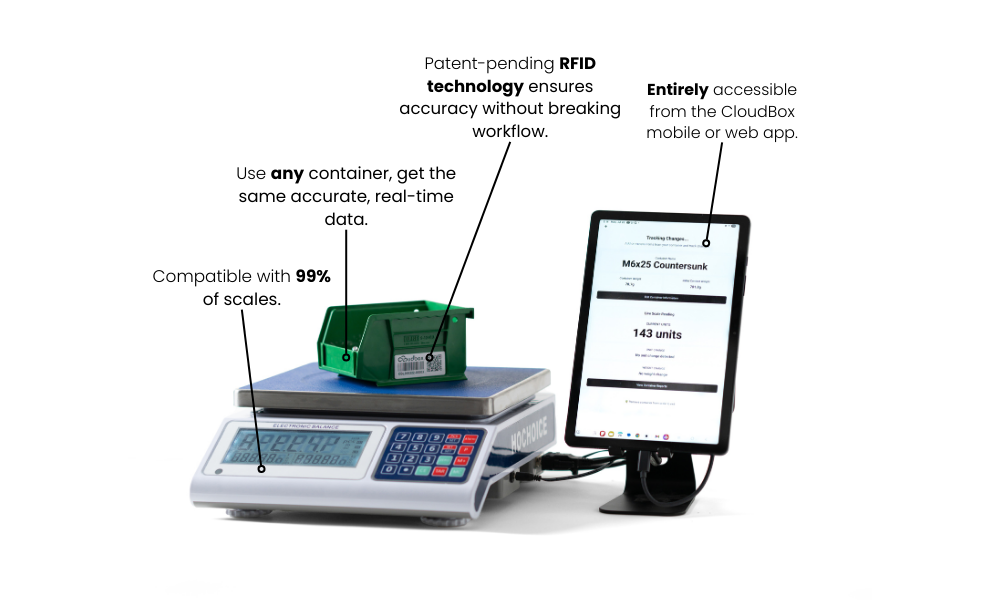
Healthcare providers face relentless pressure to deliver better care with fewer resources. Whether it is a hospital, surgical center, or outpatient clinic, the demand for efficiency touches every part of the operation. But one area often overlooked is the supply room. Behind every successful procedure or routine visit is an inventory system that either supports staff or slows them down.
The need for inventory visibility in healthcare is not a matter of convenience. It is a matter of safety, cost control, and clinical readiness. Yet many organizations still rely on outdated systems like clipboards, spreadsheets, and siloed software that cannot keep pace with modern expectations.
This blog explores why inventory visibility is so essential in healthcare settings, and how smarter storage solutions like CloudBox are changing what is possible.
The Hidden Costs of Poor Visibility
When a hospital cannot track what it has on hand, the ripple effects spread quickly. A missing surgical kit delays an operation. An expired implant creates compliance risk. A miscounted box of gloves forces a last minute order that comes with rush fees. These issues may seem minor on their own, but multiplied across departments and locations, they add up to significant operational waste.
Worse, they erode trust. Clinical staff begin hoarding supplies or placing duplicate orders just in case. Finance teams struggle to reconcile spend with usage. Executives lose sight of where resources are actually going.
Without visibility, healthcare inventory becomes reactive. And reactive systems tend to cost more and serve less.
What Visibility Really Means in Practice
True inventory visibility is not just knowing what is in stock. It is knowing where it is, how much is left, who used it, and when it needs to be replenished. This kind of real-time awareness allows teams to work with confidence, reduce redundancy, and focus on care rather than logistics.
For example, a nurse preparing a procedure should be able to glance at a dashboard and confirm that the correct instruments are clean, stocked, and available. A materials manager should be able to track usage trends across departments and adjust purchasing to match real demand. And compliance officers should be able to review access history for high value tools without requesting manual reports.
That is the level of control smart storage makes possible.
Where Traditional Systems Fall Short
Most hospitals already use some form of inventory software, but too often it relies on manual input. Staff are expected to scan barcodes, check items in and out, or fill out usage logs. These steps are frequently skipped, rushed, or filled in later from memory.
This creates blind spots. It is why two systems can show different stock counts for the same cabinet, or why one department seems to run out of supplies faster than another. In fast paced clinical settings, even small inconsistencies can create large problems.
How Smart Storage Bridges the Gap
CloudBox brings physical accountability to medical inventory. Each smart container monitors its contents in real time and updates a shared dashboard automatically. Whether storing orthopedic screws, surgical kits, or disposable supplies, CloudBox helps ensure that what you see in the system reflects what is actually on the shelf.
Because the data comes from weight sensors and integrated tracking, it does not rely on staff remembering to scan or enter values. This removes friction from daily workflows and reduces the risk of manual error.
CloudBox units can also be placed strategically across a facility, from operating room storage to central supply, creating a connected network of high visibility inventory zones. Department heads and procurement teams can access detailed usage logs, restocking alerts, and product movement history, all in one place.
Real Benefits for Real Healthcare Teams
Hospitals that implement real-time inventory visibility report faster audits, better purchasing accuracy, and smoother handoffs between shifts. Nurses waste less time searching for tools. Techs do not need to double count trays. And leadership gains a better understanding of where resources go and why.
This kind of clarity also supports better planning. Whether preparing for a busy season or scaling to a new wing, teams can forecast needs with confidence. Waste goes down, availability goes up, and compliance becomes easier to prove.
Final Thought
Healthcare is too important to be slowed down by missing supplies or uncertain counts. When inventory is invisible, it creates stress, delays, and risk. When it is visible, it becomes a strength, one that empowers staff, protects patients, and improves outcomes.
Smart storage is not just about technology. It is about creating a system that supports the people who make healthcare work. With CloudBox, visibility becomes the standard, not the exception.
.avif)

.png)




.png)

.png)
.png)




